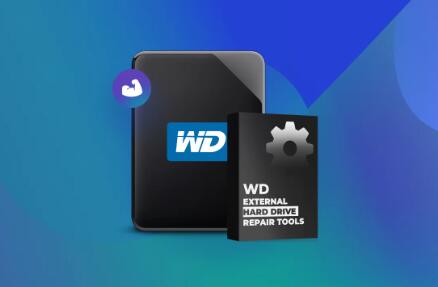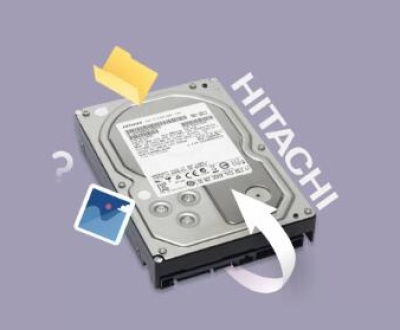Western Digital external hard drives are popular storage devices used by many to store and backup important data. However, like any other storage device, they can encounter various issues that may lead to data loss or malfunction.
2. Common Issues with Western Digital External Hard Drives
Drive Not Recognized: The computer fails to detect the external hard drive. This could be due to faulty USB cables, incorrect drivers, or issues with the hard drive itself.

Clicking Noises: Unusual clicking sounds coming from the hard drive. This is often a sign of a mechanical problem, such as a failing spindle motor or a damaged read – write head.
Slow Performance: The hard drive operates much slower than usual. This can be caused by fragmented data, a full disk, or software conflicts.
Data Corruption: Some or all of the data on the hard drive becomes inaccessible or appears to be corrupted. This can result from power outages, improper ejection, or virus infections.
3. Troubleshooting Steps
Check the Physical Connections
Inspect the USB Cable: Examine the USB cable for any signs of damage, such as frayed wires or bent connectors. If damaged, replace the cable with a new one.
Try Different USB Ports: Plug the external hard drive into different USB ports on your computer. Sometimes, a particular port may be malfunctioning.
Check the Power Supply: If the external hard drive requires an external power source, make sure the power adapter is properly connected and the power light is on.
Update Drivers and Firmware
Update USB Drivers: Out – of – date USB drivers can cause compatibility issues. Visit the manufacturer’s website of your computer (e.g., Dell, HP) and download the latest USB drivers for your specific model.
Update Western Digital Drivers: Go to the Western Digital official website and download the latest drivers for your external hard drive model. Install the drivers following the on – screen instructions.
Check for Firmware Updates: Western Digital occasionally releases firmware updates to improve the performance and stability of their hard drives. Use the Western Digital software provided to check for and install any available firmware updates.
Scan for Viruses and Malware
Run a Full System Scan: Use your preferred antivirus software to perform a full scan of your computer, including the external hard drive. This will detect and remove any viruses or malware that may be affecting the hard drive.
Use Anti – Malware Tools: In addition to antivirus software, run anti – malware tools such as Malwarebytes to scan for and remove any malicious software that may have evaded the antivirus scan.
4. Advanced Fixes
Disk Management and Partitioning
Open Disk Management: Press the Windows key + R, type “diskmgmt.msc”, and press Enter. This will open the Disk Management utility.
Check for Unallocated Space: If the external hard drive shows up as unallocated space, you may need to create a new partition. Right – click on the unallocated space and select “New Simple Volume” to create a new partition and format it.
Repair a Corrupted Partition: If a partition on the external hard drive is corrupted, you can try using the “chkdsk” command in Windows. Open the Command Prompt as an administrator and type “chkdsk /f X:”, where “X” is the drive letter of your external hard drive. This will scan and repair any file system errors.
Data Recovery
Stop Using the Drive: As soon as you notice data loss or corruption, stop using the external hard drive immediately to prevent further damage to the data.
Use Data Recovery Software: There are several data recovery software available, such as EaseUS Data Recovery Wizard and Recuva. Download and install the software, then follow the instructions to scan the external hard drive for lost or corrupted data. Select the files you want to recover and save them to a different location. Do not save the recovered data back to the original external hard drive.
Seek Professional Data Recovery Services: If the data recovery software fails to recover your important data, you may need to contact professional data recovery services. Companies like Seagate Data Recovery Services and DriveSavers have the expertise and specialized equipment to recover data from damaged hard drives. However, these services can be expensive.
Replace the Hard Drive Inside the Enclosure (for some models)
Check if the Model Allows It: Some Western Digital external hard drives have removable hard drives inside the enclosure. Check the product manual or online forums to see if your model allows you to open the enclosure.
Open the Enclosure: If possible, carefully open the enclosure using a small screwdriver or other appropriate tools. Be careful not to damage the internal components.
Remove the Hard Drive: Disconnect the hard drive from the enclosure’s circuit board and remove it.
Test the Hard Drive: You can connect the hard drive to a different computer using a SATA – to – USB adapter to see if it is recognized. If it is, the problem may be with the enclosure’s circuit board.
Replace the Enclosure or Circuit Board: If the hard drive is working fine but the enclosure or circuit board is faulty, you can purchase a new enclosure or circuit board compatible with your hard drive model and transfer the hard drive to the new enclosure.
5. Preventive Measures
Regular Backups: Use backup software to regularly back up the data on your external hard drive to another storage device or cloud storage. This way, if the hard drive fails, you will not lose your important data.
Proper Ejection: Always eject the external hard drive properly using the “Safely Remove Hardware” icon in the system tray before unplugging it. This helps prevent data corruption and file system errors.
Keep the Drive Cool and Clean: Avoid exposing the external hard drive to high temperatures, moisture, and dust. Keep it in a cool, dry place and use a clean cloth to wipe it regularly.
Use a Surge Protector: Connect the external hard drive to a surge protector to protect it from power surges and voltage spikes that can damage the hard drive.
About us and this blog
Panda Assistant is built on the latest data recovery algorithms, ensuring that no file is too damaged, too lost, or too corrupted to be recovered.
Request a free quote
We believe that data recovery shouldn’t be a daunting task. That’s why we’ve designed Panda Assistant to be as easy to use as it is powerful. With a few clicks, you can initiate a scan, preview recoverable files, and restore your data all within a matter of minutes.
Subscribe to our newsletter!
More from our blog
See all postsRecent Posts
- Ps4 corrupted data fix 2025-04-02
- How do i restore deleted files on my computer? 2025-04-02
- How to restore hard disk deleted files? 2025-04-02










